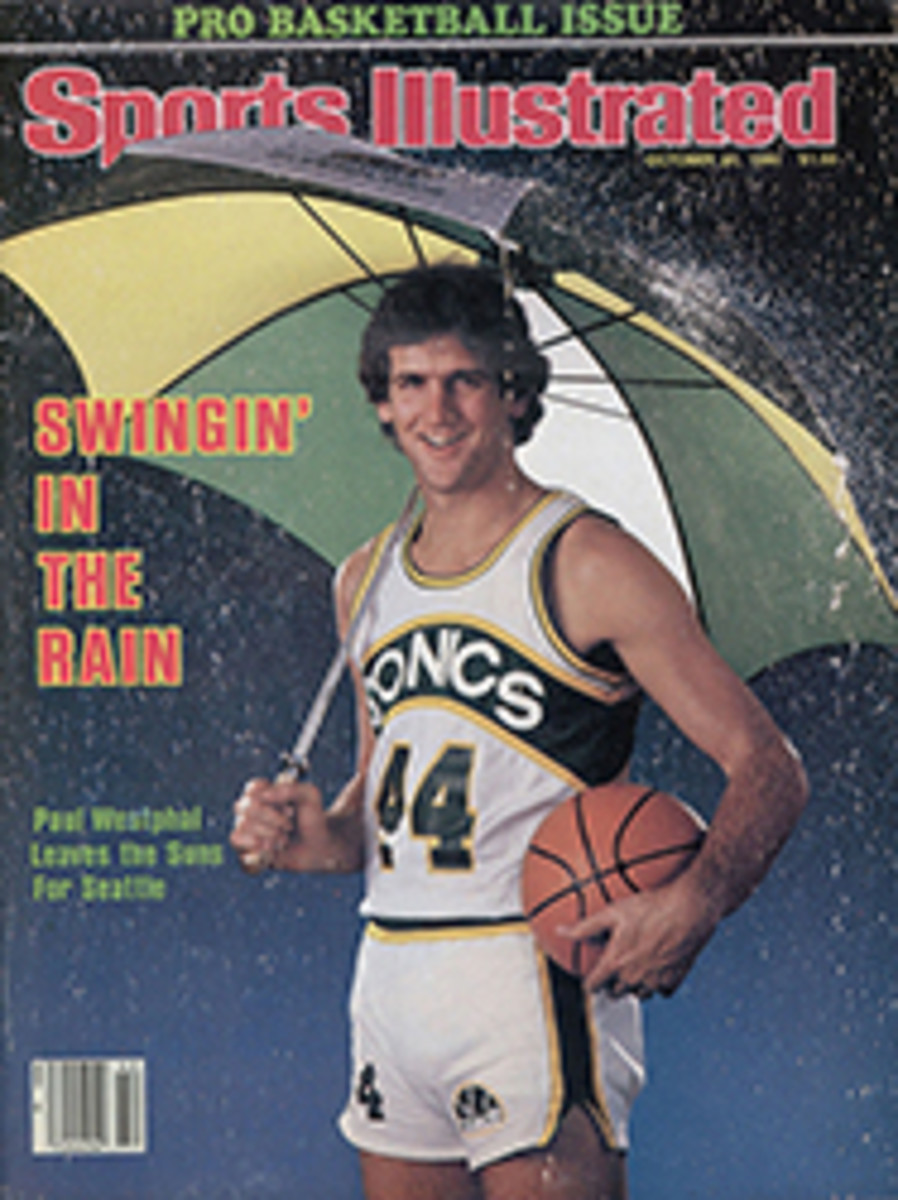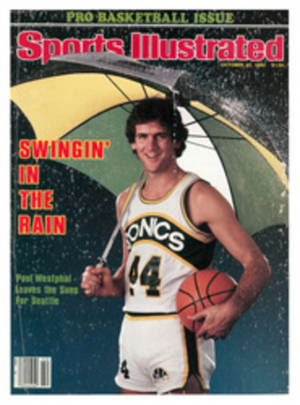
BIG GUYS ON THE BLOCK
SHOOTING DOWN SHOOTERS
The blocked shot is to basketball what the pick-off play is to baseball or the interception to football. It can transform a game, not only because of its startling immediate effect but also because of its psychological aftereffects: exhilaration for its perpetrator and humiliation for its victim. It might even be called the slam dunk of defense.
Shot-blocking is the special weapon of the biggest players, men like Cleveland's 7' Elmore Smith, who became the first player to lead the league in that statistical category when it was introduced in 1973-74. In the process Smith, who was then with the Lakers, also set the single-game record of 17 against Portland. "You can push and you can shove underneath," Smith says. "But is there any better way to protect the basket than to stop the ball before it gets there?"
Smith, 6'11" Bill Walton (with Portland in 1976-77), and 6'11" George Johnson (with New Jersey in 1977-78) are the only three men to wrest the shot-blocking title away from the Lakers' 7'2" Kareem Abdul-Jabbar. With a career average of 2.19 blocks per game—representing a potential scoring swing of 8.76 points—Abdul-Jabbar is today's master of the reject. Kareem began to learn the fine art of shot-blocking from high up in the old Madison Square Garden, where as a tall, lean seventh-grader, he could stretch his legs over a couple of seats and study the technique of Boston's 6'9" Bill Russell. "He'd get a rebound or block a shot," Abdul-Jabbar remembers, "and the Celtics would take off on the fast break. But Bill would stay on the defensive end of the floor. I'd watch him, study him closely, and sometimes I noticed he'd just stand there. I tried to figure out what he was doing, and, finally, I realized it was part of the game plan. It was his job to start the break but not be an integral part of it."
Walton, now San Diego's limping redhead, has a style that closely resembles Abdul-Jabbar's. Walton says he lays back so he can "sucker the man into thinking he has the shot. Then bang, you're right there."
Another man who's often right there is 7' Robert Parish of Boston. Recently acquired from Golden State, he matured as a shot rejector in 1979 when he finished with 217 blocks, fourth in the league. A foot injury kept him out of the lineup much of last season when he just missed the top 10.
The bane of all shot blockers is goaltending, which gives the shooter two points whether the ball would've gone in or not. Probably no one has been called for that infraction more often than Johnson, who now is with San Antonio. While playing for the Nets last season, he reached high for a shot but pulled back when he realized that he had jumped too late to legally block the ball. So notorious has Johnson become for his goaltending that Referee Lee Jones blew his whistle in anticipation of making a call and then embarrassingly had to acknowledge his error, describing his toot as "inadvertent." Johnson has made enough clean blocks not only to lead the league once but also to finish second in the two seasons since. Good thing. With his meager 5.8-point career scoring average, he'd probably be out of a job if he weren't a notable rejector.
Atlanta's Dan Roundfield and teammate Wayne (Tree) Rollins are also among the league's top blockers—when they can stay out of foul trouble. Their combination of 639 personals and 383 rejections last season had much to do with the Hawks finishing first and fifth, respectively, in those two team categories. The 7'1" Rollins, who has a 42-inch sleeve length, is one of the NBA's most prolific blockers per minutes played. Roundfield, a 6'8" power forward, is often matched inside against the opposition's strongest player. Roundfield, a righthander, has found how helpful his left hand can be. "I can get away with letting my man get by me a little and then use my left hand to take his righthanded layup before it gets to the glass," he says. Bill Russell, a natural lefthander, adds, "I'd go up with my mirror hand. That way I didn't have to reach across to make my block. It gave me a stronger and surer hand on the ball."
While height and arm reach are shot-blocking essentials, most rejectors agree that timing is the most important element. "To block a man's shot you must be in synch with him," says Johnson. This synchronization is achieved by the defender leaving his feet a split second after the shooter has—so that the defender will be at the apex of his jump just as the ball is released.
When this deft bit of timing is carried off, the satisfactions can be substantial. "Blocking a man's shot gives me the same feeling a scorer gets from hitting three straight jumpers," says Johnson. "I can play the game and not score. It doesn't bother me. I just want the other guy's shot." Because most blockers aren't high scorers, this feeling is widespread among them.
All blockers, scorers and nonscorers alike, believe in working over an opponent's psyche. Phoenix' 6'4" Dennis Johnson, who led the league's backcourt men with 82 blocks for Seattle last year, while pumping in 19 points a game, says, "Shot-blocking is a great intimidating force that I think is underplayed. When you block a man, it lays on his mind. The next time, he'll be thinking about it, and maybe he'll change his shot just a bit, and miss." Indeed, merely having an opponent think you'll block his shot is often as good as a BLK on the stat sheet. Entire teams have changed their offensive patterns because of the presence of an intimidating rejector.
Russell says that his primary concern wasn't how many blocks he got—even the best rejectors rarely get more than four a game—but when he got 'em. "I've always said that, even if I'm lucky, I can only block from 8% to 10% of the shots taken against me," he once explained. "The real secret is knowing which 8% or 10% to go after. If I block only 8% of the shots you take, but 90% of the ones I go after, who's going to be negatively affected, me or you?" Washington Coach Gene Shue adds, "A block that happens late in the game, on a crucial play, can be very damaging mentally. Even if it psychs the other team out for only an instant, that can be enough to decide a game."
ILLUSTRATION
THREE PHOTOS
Atlanta's Steve Hawes is clearly on the ball (top left), while Boston's Bob Parish knows how to make a shooter come up with zeros (below left). When he's able to play, and unfortunately he can't right now, San Diego's Bill Walton blocks with the best.
TWO PHOTOS
The Lakers' Abdul-Jabbar (far left) is the game's premier shot-blocker, while Golden State rookie Joe Barry Carroll has a rejection syndrome.

